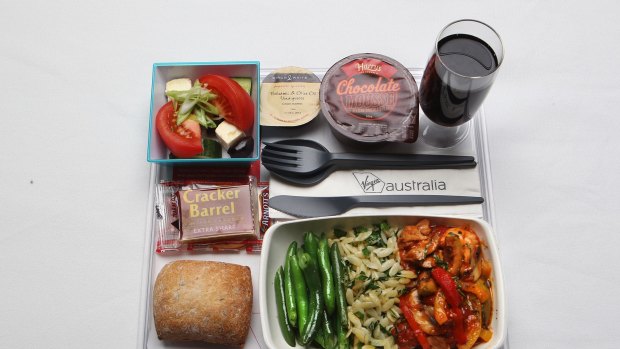This was published 9 years ago
How much cabin waste do airlines generate each year?

It's cheaper for airlines to use light plastic cutlery and cups.Credit: Rob Homer
According to a Green America report published in 2010, each airline passenger generates just more than a kilogram of waste per flight. In 2013, airlines around the world carried 6.3 billion passengers, who, therefore, produced more than 3.15 million tonnes of waste.
Traditionally, airlines have a preference for non-reusable items. Reusable knives, forks, trays, cups and glasses cost more, are heavier and need to be separated from food waste, sterilised and cleaned, and that all adds to costs.
It is simpler and cheaper for an airline to use non-recyclable plastic, have passengers heave everything into a big plastic bag along with the leftover food and hand it all to a waste disposal contractor. However, a lot of that waste, including newspapers and magazines, plastic cups and aluminium cans, can be recycled.
Some airlines do a better job of this than others. In 2013/14, Qantas sent 20 per cent less waste to landfill than in 2009/10, achieved partly through recycling and composting of aircraft waste. British Airways separates and recycles aluminium cans, but only on flights into London airports.
Attempts to implement a vigorous recycling programme can be frustrated by government regulations. For example in many countries, including Australia, quarantine restrictions prevent airlines from recycling waste from incoming international flights.
Another problem is that for an airline to develop a truly comprehensive programme it needs to establish recycling and reprocessing facilities at every airport it uses, since used items from a previous flight cannot be transported on board to a central processing facility. It is airports that should be offering that service to airlines, and they don't seem interested.
Sign up for the Traveller newsletter
The latest travel news, tips and inspiration delivered to your inbox. Sign up now.